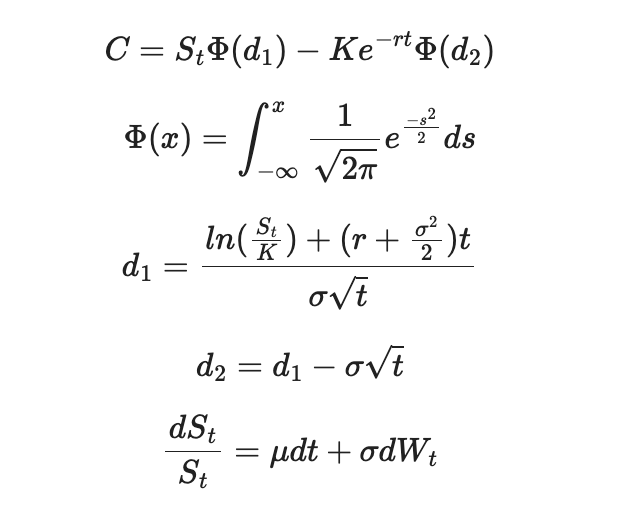Pricing Models
Monte Carlo Strategy
At Luxsolis Investments, we integrate computational power with mathematics to simulate millions of possible outcomes of an option using the Black Scholes Model. These calculations use stochastic processes which take into account that stock prices don’t follow a fixed path but a probability-driven one. We assume Geometric Brownian motion: modeling the chaotic behavior of real prices.
"The Trillion Dollar Equation"

Fibonacci Ratios
Luxsolis Investments uses Fibonacci ratios, to predict future prices. Fibonacci retracements are horizontal levels drawn on a chart to indicate possible support or resistance zones where price might reverse during a pullback. Fibonacci extensions are levels beyond 100% that help traders estimate where price might go after a breakout or trend continuation.
Retracements
- 0.236 (23.6%)
- 0.382 (38.2%)
- 0.500 (50%)
- 0.618 (61.8%) ← the “Golden Ratio”
- 0.786 (78.6%)
Extensions
- 1.272 (127.2%)
- 1.618 (161.8%)
- 2.000 (200%)
- 2.618 (261.8%)
Fibonacci ratios are useful for setting up entry and exit points. By using these levels, quant trading is simple, allowing a trader to lock in profits by sticking to a numerical framework that removes the element of fear and greed from the equation.
Quantitative Algorithms
Jim Simons, the famous mathematician and hedge fund investor, integrated machine learning into Renaissance Technologies in the 80's, revolutionizing the market. Inspired by Simon's genius, we use quantitative algorithms that automatically buy shares at undervalued prices through Python.
Luxsolis Investments uses the scientific method to develop investment thesis: we observe a pattern, create a hypothesis and run experiments. Once analysis is complete, we deploy capital, and let our quantitative algorithm to do the heavy lifting and mechanics. Pattern recognition is our philosophy.
Without fail, the earth will circle the sun every year, turning on its axis four times, to create the seasons. Observing this naturally occurring cycle, we created an investment fund that captures demand for products that are seasonally consumed. Once these equities are entered into a Python program, we allow for the beauty of time and space to watch profits multiply.